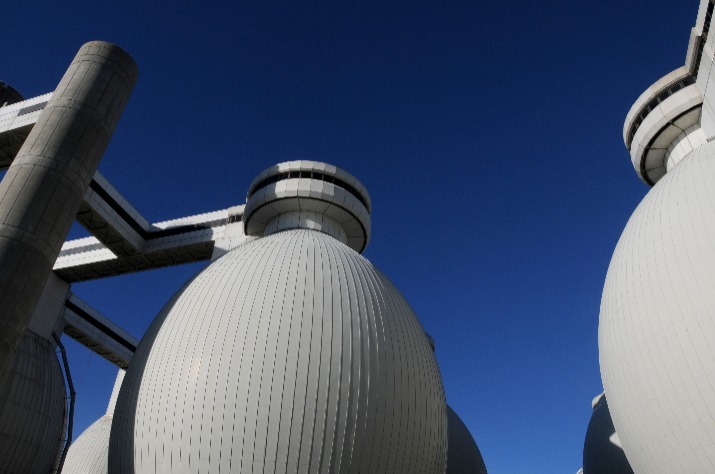The Invisible Shields: How Geomembranes Are Silently Protecting Our Environment
When we think about environmental protection, our minds often drift to dramatic images: solar panels glistening in the sun, wind turbines spinning majestically on hillsides, or perhaps activists passionately protesting pollution. But beneath our feet, largely unseen and rarely celebrated, lies one of our most crucial environmental safeguards: geomembranes.
The Unsung Heroes of Environmental Protection
Imagine a world where toxic chemicals from landfills freely seep into groundwater supplies, where mining waste gradually contaminates surrounding ecosystems, or where industrial chemicals silently infiltrate neighboring communities. This isn't some dystopian fiction—it's precisely what would happen without the implementation of geomembrane technology.
These engineered barriers, primarily made from high-density polyethylene (HDPE), create nearly impermeable shields that contain hazardous materials and prevent them from entering our soil and water systems. Yet despite their critical importance, most people have never heard of them.
How Exactly Do Geomembranes Work?
At their core, geomembranes are sophisticated plastic liners engineered specifically for containment. Their primary function is deceptively simple: create an impenetrable barrier that prevents liquids and gases from escaping their designated areas.
The science behind them, however, is anything but simple. Modern geomembranes need to withstand:
- Extreme weather conditions
- Chemical exposure
- Physical stress and punctures
- UV radiation
- Microbial degradation
- Ground settlement and movement
The most commonly used material, HDPE, offers exceptional chemical resistance and durability, with quality installations potentially lasting 100+ years. This longevity is crucial because the contaminants they contain often remain dangerous for generations.
The Silent Environmental Disasters We Don't See
Perhaps the most fascinating aspect of geomembrane technology is what happens when it's absent or fails. These scenarios rarely make headlines but can be devastatingly impactful:
Leachate Contamination
When rain filters through landfill waste, it creates a toxic brew called leachate, containing dissolved chemicals, heavy metals, and biological contaminants. Without proper geomembrane containment, this leachate infiltrates groundwater supplies, potentially affecting drinking water for thousands or even millions of people. The contamination can persist for decades, sometimes centuries.
Mining Disasters Waiting to Happen
Mining tailings ponds—enormous reservoirs of liquid waste from mining operations—contain some of the most hazardous materials on earth. A single failure in these containment systems can release millions of gallons of toxic slurry into the environment. The 2014 Mount Polley mine disaster in British Columbia released 24 million cubic meters of mining waste into nearby lakes and rivers when a tailings dam failed—a catastrophe that proper geomembrane implementation might have prevented.
The Invisible Methane Problem
Beyond liquid containment, geomembranes in landfills also play a critical role in capturing methane—a greenhouse gas 25 times more potent than carbon dioxide. Without these systems, this invisible climate accelerant would silently escape into our atmosphere, significantly worsening climate change.
Beyond Landfills: The Expanding Role of Containment Systems
While many associate geomembranes primarily with landfills, their applications extend far beyond waste management:
Agricultural Revolution
Modern agriculture increasingly relies on geomembranes for water conservation. Lined irrigation ponds and canals prevent water loss through seepage—a critical function in drought-prone regions. Additionally, these liners prevent agricultural chemicals from contaminating groundwater, protecting both environmental and human health.
Energy Sector Safeguards
The energy industry, particularly hydraulic fracturing (fracking) operations, utilizes geomembranes to contain the chemical-laden fluids used in the extraction process. Without these protective barriers, these substances could contaminate groundwater supplies, potentially affecting drinking water for surrounding communities.
Disaster Remediation
After environmental disasters occur, geomembranes often play a central role in cleanup and containment strategies. From oil spills to chemical releases, these materials help prevent further spread of contaminants and facilitate remediation efforts.
The Environmental Cost of Environmental Protection
Despite their vital role in environmental protection, geomembranes themselves present certain environmental challenges. Most are petroleum-based products, requiring fossil fuel extraction and processing. Their manufacturing processes consume energy and produce emissions.
This creates an interesting paradox: we rely on products with environmental impacts to prevent even greater environmental damage. This reality highlights the complex trade-offs often required in environmental engineering and protection efforts.
The industry continues to evolve, however, with ongoing research into more sustainable materials and manufacturing processes. Biobased geomembranes and recycled content options are beginning to emerge, promising reduced environmental footprints without compromising performance.
Why This Matters to All of Us
The environmental protection provided by geomembranes directly impacts our:
- Water security: By preventing contamination of groundwater supplies
- Public health: By containing hazardous materials that could otherwise cause illness
- Ecosystem preservation: By protecting sensitive natural environments from industrial pollution
- Climate stability: Through methane capture and containment
- Food security: By preventing agricultural chemical runoff and preserving water supplies
In an era of increasing environmental challenges, these invisible protectors deserve greater recognition and understanding. They represent a crucial layer of defense between human activity and environmental harm—a technological shield protecting both natural ecosystems and human communities.
Looking Forward: The Future of Environmental Containment
As environmental regulations tighten globally and public awareness of pollution risks grows, geomembrane technology continues to advance. Innovations include:
- Self-healing liners that can repair minor punctures automatically
- Smart geomembranes with embedded sensors to detect leaks before environmental damage occurs
- More durable formulations that can withstand increasingly extreme weather conditions
- Sustainable materials with reduced environmental footprints
These advances promise even more effective environmental protection in the coming decades, silently safeguarding our ecosystems from contamination.
Want to learn more about these unsung environmental heroes? Visit the Wasters Blog for an in-depth exploration of how geomembranes and liners prevent environmental disasters: https://wastersblog.com/104500/how-geomembranes-and-liners-prevent-environmental-disasters/
The article includes additional technical details, case studies of environmental containment successes and failures, and expert insights into this fascinating field of environmental engineering.
Image courtesy of Plastic Fusion Fabricators.





